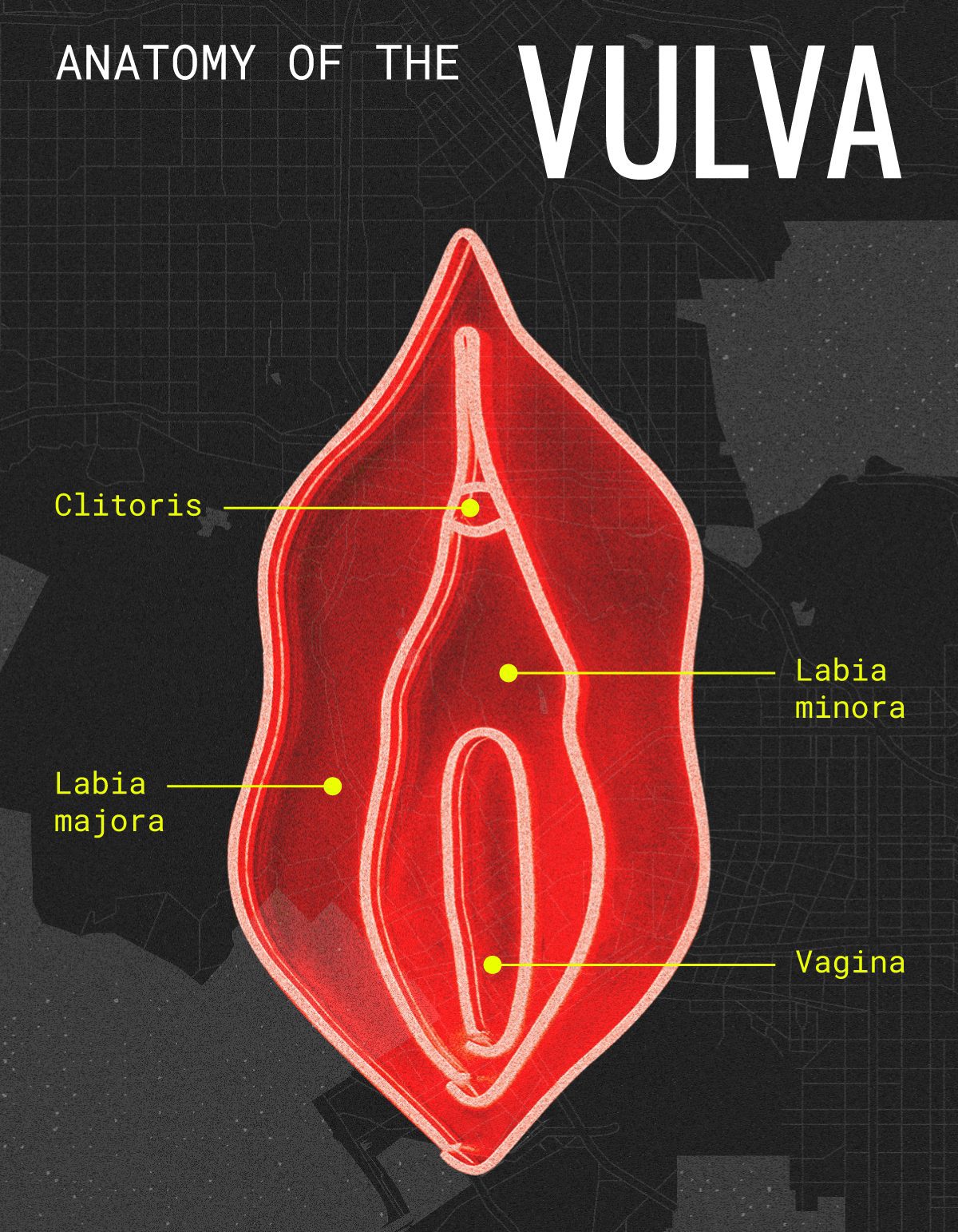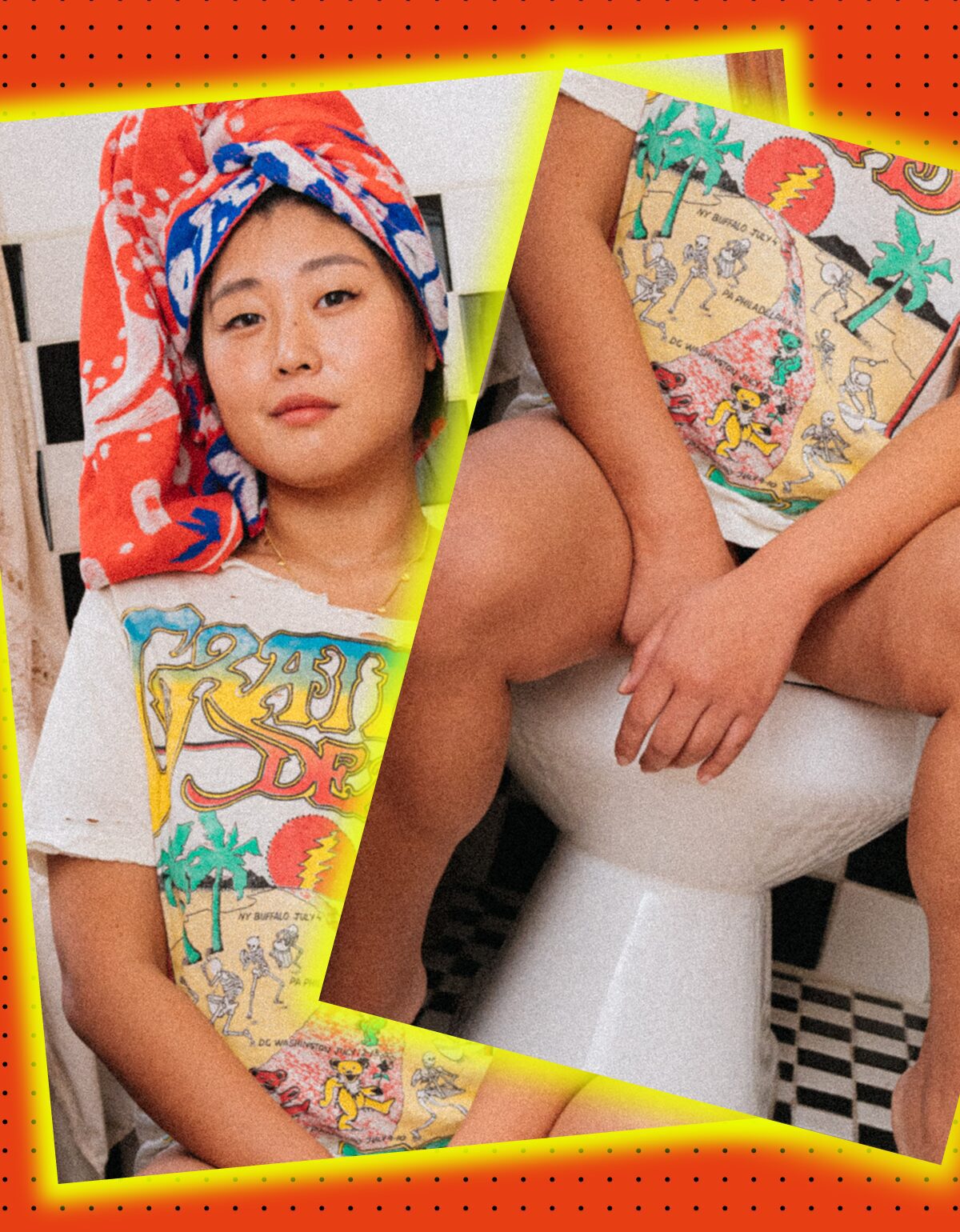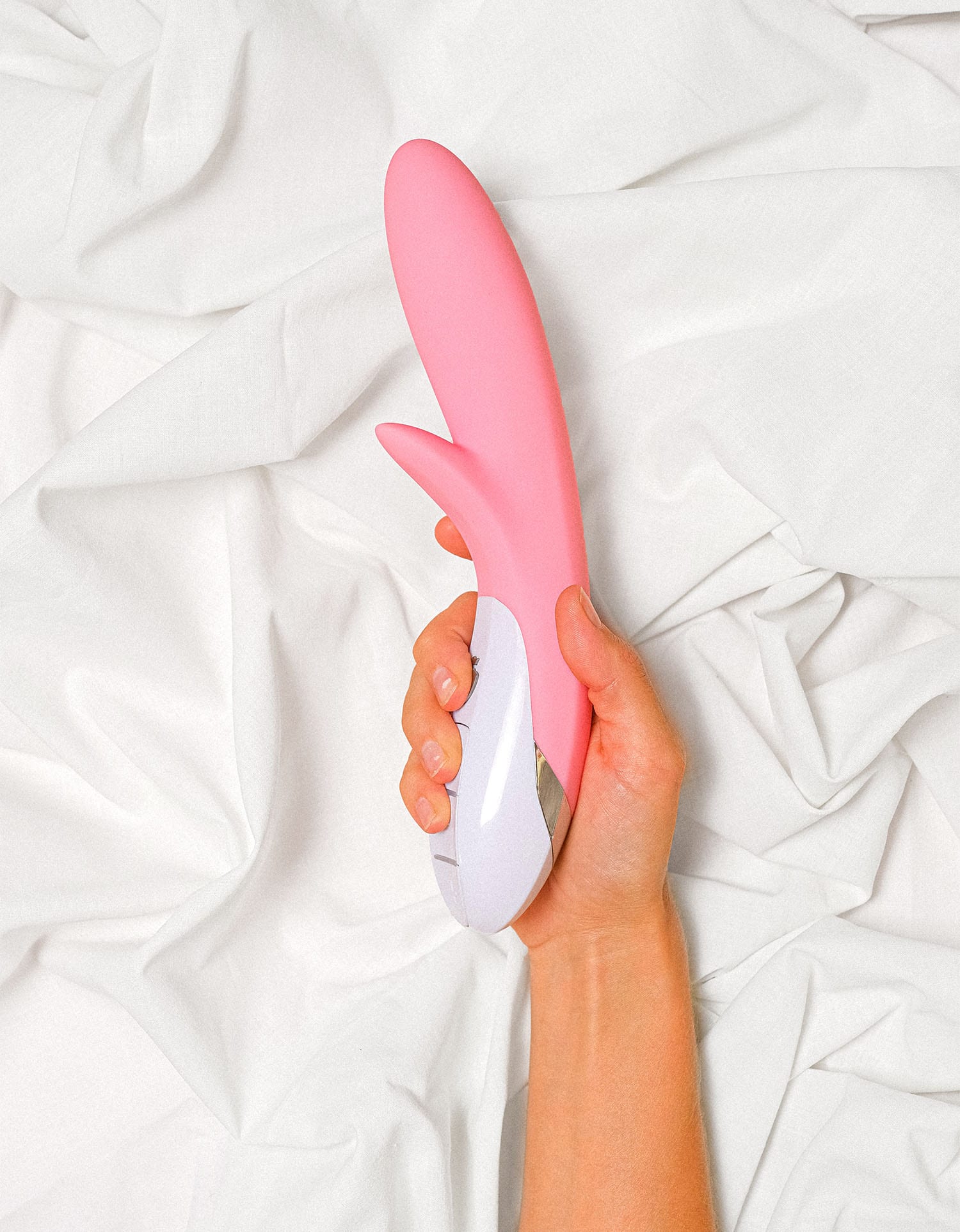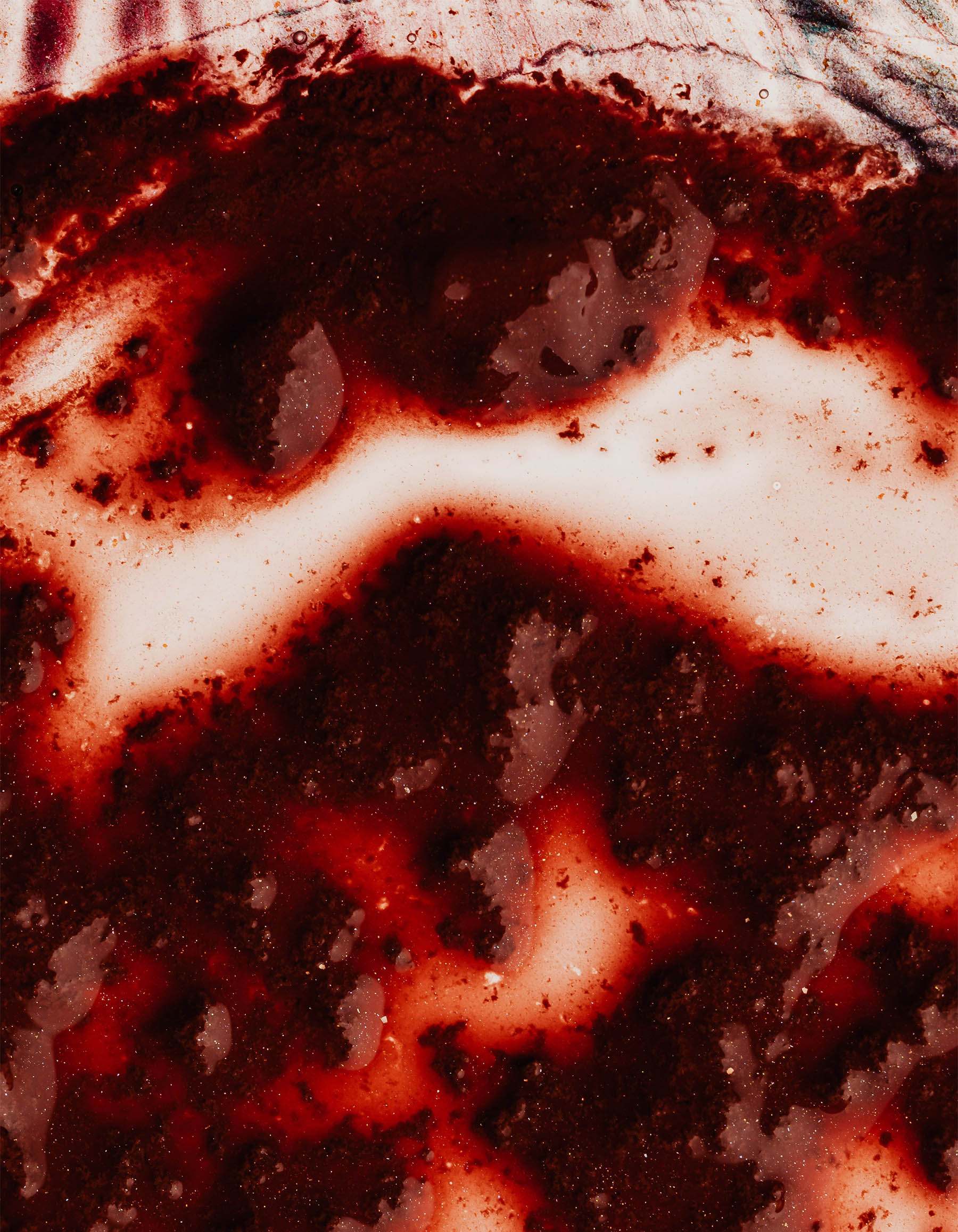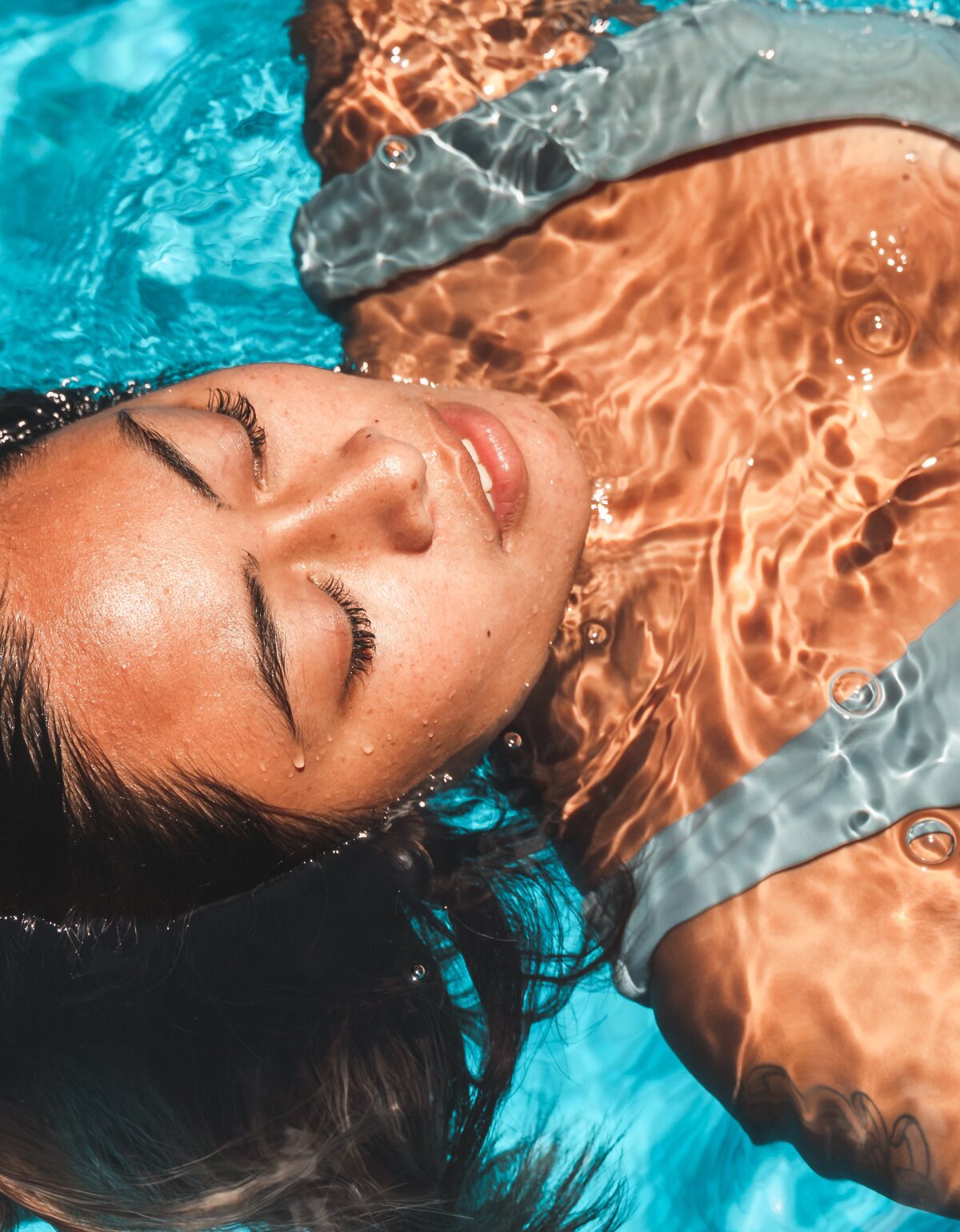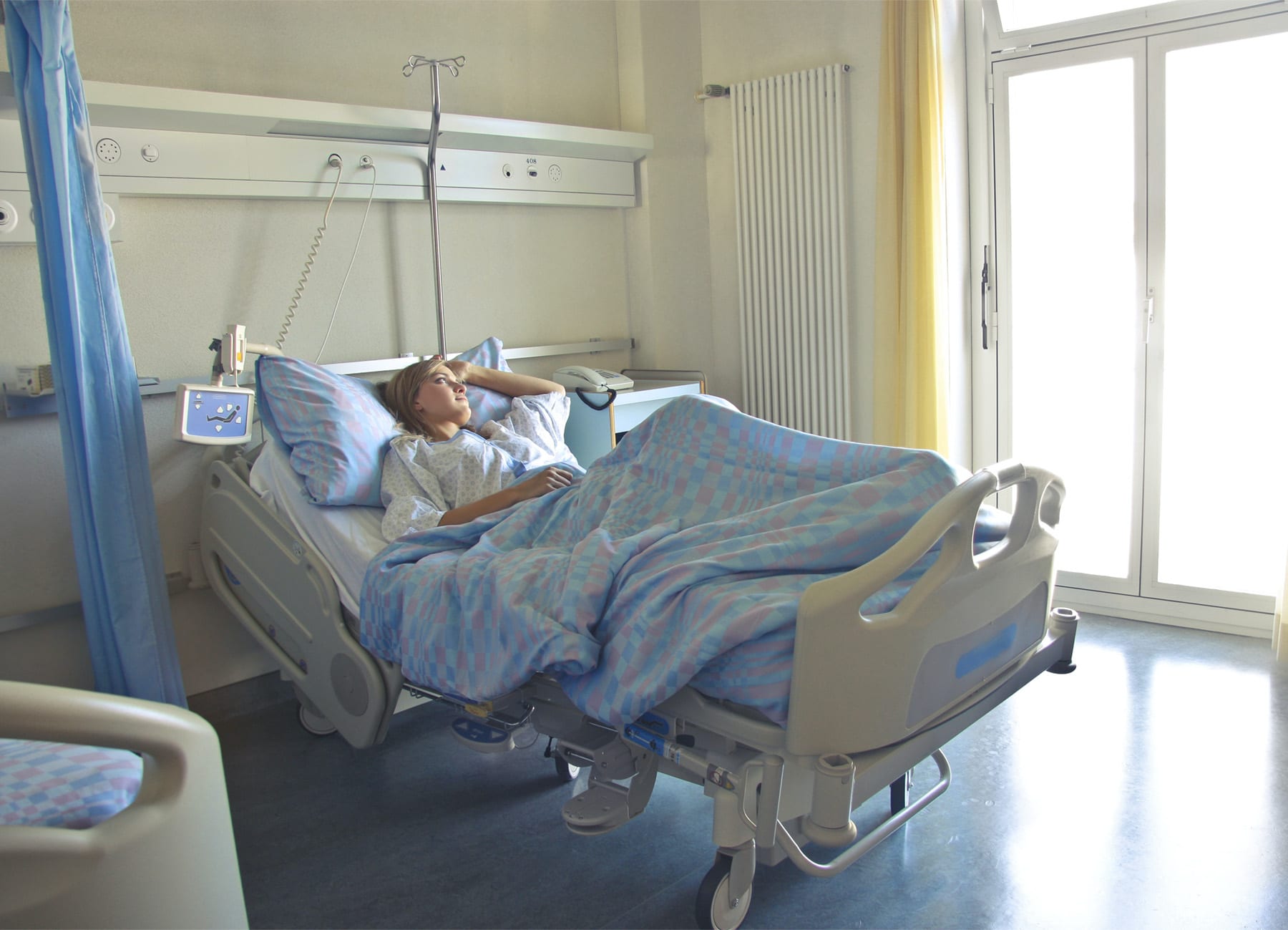Vulva Anatomy: What is vulva mapping & why it’s worth trying
If you’re new to the practice, vulva mapping is a complicated-sounding term for getting well acquainted with your own vulva anatomy: what it looks like, where it has the most and least sensitivities, and where your specific vulva anatomy lies. It’s basically a blueprint for your bits. You can try vulva mapping in the comfort of home with a handheld mirror, and you don’t need any cartography skills to do it.
Vulva mapping is a seemingly simple thing to do—but it can be quite powerful.
Exploring your vulva (the female external genitalia including the labia, vaginal opening, and the clitoris) with a handheld mirror might conjure up the famous scene from the movie Fried Green Tomatoes, but it can have instrumental effects in different parts of your life—like increasing self-esteem, genital self-image, sexual desires and satisfaction. We’ll get to what all of these terms mean and how they relate to the vulva in a bit.
So, why is vulva mapping so empowering? Society impresses on us a fear of even mentioning the words “vulva,” “vagina,” or “menstruation.” It’s no wonder that many people don’t grow up with the permission to look at and explore their own genitals. Vulva mapping is a permission-granted sort of practice, and you can do it once or have as many mapping sessions as you want.
Knowing your body and vulvar anatomy is powerful
People with vaginas are taught to hate them through speech, stigma, and imagery. Images that depict the anatomical structure of vulvas are often unrealistic. And while vulvas shown in pornography are absolutely part of this, the origins of offering inauthentic depictions of the external female genitalia trace back to elementary school textbooks.
Think about any anatomical illustration you’ve ever seen of a vulva: Instead of a veritable representation of how vulvas look, these illustrations usually show a plastic-pink-colored vulva that comes closer to resembling Barbie’s anatomy than a part of the human body.
If the vulva images do, in fact, show the labia—because labial skin folds tend to magically vanish in these illustrations—they are perfectly symmetrical. There’s never any pubic hair (or ingrowns!) on these illustrations either, which are both common and completely normal to have.
Social media and pornography influence how people feel about their genitals, too. Think about how most images of vulvas you’ve seen are unrealistic. These reference points are a catalyst for vulva-havers to dislike how their parts look.
Labiaplasty and other cosmetic procedures are on the rise, with a 73.3% worldwide increase since 2015 as vulva-havers try to create a “designer vagina,” one term that gets tossed around when speaking of labiaplasty.1 But options for cosmetic procedures that pertain to vulvas and vaginas are endless. These surgeries might entail vaginoplasty or “tightening” the vaginal walls, clitoral hood reduction, or a monsplasty, which is essentially a pubic lift.
PSA: Your vagina is extremely resilient and, despite popular belief, doesn’t get “stretched out” by sex, period products such as menstrual cups or discs, or sex toys.
If we were shown a variety of realistic vulvas as our framework in these textbook diagrams, it might change how we feel about them. That’s why art that depicts a range of vulvas and their nuances is so essential, and also why artist Laura Dodsworth photographed 100 vulvas or why illustrator Hilde Atalanta made The Vulva Gallery.
In fact, a study published in the Journal of Psychosomatic Obstetrics and Gynecology measured genital self-image, AKA one’s perception towards their genitals, in 43 vulva-having participants. The participants were shown pictures of natural vulvas; the researchers found that exposure to said imagery may lead to a more positive genital self-image in people considering labiaplasty. Viewing realistic vulvas also had a positive impact on self-esteem.2
You might consider how you feel about the appearance of your own vulva—what shaped these feelings? Does comparison influence how you feel? Where does your reference point originate?

Vulva Anatomy 101: A quick refresh
Let’s refresh our understanding of vulva anatomy. The vulva is the external part of the female genitalia. The structures of the vulva can be found outside of your body and include the labia majora, labia minora, clitoris, vaginal opening, and mons pubis. Through exploration, we can appreciate the intricate beauty and diversity of vulvas.
Labia Majora & Labia Minora:
They serve to protect the sensitive vulvar tissues and play a role in sexual pleasure. The variations in size, shape, and color are entirely normal and unique to each individual, emphasizing the diversity of vulvas.
The mons pubis:
The mons pubis is a rounded, fatty area located in front of the pubic bone, below the abdominal area. It protects the pubic bone during intercourse and provides cushioning.
Clitoris and the clitoral hood:
A highly sensitive organ that plays a crucial role in sexual response. This part of the vulva contains erectile, spongy tissue with thousands of nerve endings (more specifically, the dorsal nerve of the clitoris, which stems from the pudendal nerve according to the Cleveland Clinic), that transmit pleasurable sensations and are key to achieving orgasm for many individuals. Understanding and appreciating the clitoris is essential for sexual well-being.
The clitoris is located at the top of your vulva and is covered by a hood of skin called the clitoral hood, which makes a lubricant called sebum that helps it glide smoothly over your clitoris and serves to protect the clitoris from irritation and overstimulation.
The vaginal opening:
The entrance to the vagina, a muscular canal that starts from the vulva and leads to the cervix. It plays a vital role in sexual intercourse and childbirth. It is surrounded by the labia and varies in size and shape among individuals.
Before the vaginal opening, you will find the vestibule – a small area of tissue between the labia minora that contains the urethral opening and vaginal opening. The vaginal canal connects your external organs to the uterus, allowing sexual intercourse, childbirth, and the passing of menstrual blood and vaginal discharge.
The vulva receives its blood supply primarily from branches of the internal pudendal artery, which itself is a branch of the internal iliac artery. Additionally, the labia majora are also supplied by the superficial external pudendal artery, a branch of the femoral artery. These arteries are crucial for sexual arousal, as blood flow to the clitoris and other vulvar tissues is a key component of the female sexual response. Increased blood flow, known as vasocongestion, leads to swelling and sensitivity, which contributes to sexual pleasure.
Your vulva is literally one-of-a-kind (and that’s the point)
Considering your curiosity about your own vulva’s appearance and feelings, it’s important to recognize that societal influences, media representation, and personal experiences can shape these perceptions. Comparison to idealized standards portrayed in media or lack of accurate information may impact how one feels about their own anatomy. It’s essential to remember that diversity is natural and beautiful, with no two vulvas being exactly alike.
As we delve into the anatomy of the vulva, it becomes evident each vulva is unique, with its own characteristics that contribute to an individual’s sense of self. By embracing this diversity and learning to love and appreciate our own bodies, we pave the way for a positive genital self-image and improved self-esteem.

How vulva mapping can be beneficial
Refinery 29 surveyed 3,670 people about their thoughts toward their vaginas. The survey found that 48% of those people had concerns about the appearance of their vulvas. Further, 34% of participants said they’d consider changing their vulva or vagina.3 That’s nearly half of the population of people AFABAFAB stands for “assigned female at birth.” who consider their vulvas to be flawed.
By comparison, only 30% of people AMABAMAB stands for “assigned male at birth.” reported dissatisfaction with their genitals according to a different study.4
Concerns around vulvar appearance might manifest as poor self-esteem, stress, disinterest, or dissatisfaction with sex. Taking a gander at your own and coming to realize that there is no “normal,” despite how textbooks, social media, or mainstream porn might portray it, can help boost self-esteem (among other positive effects).
We’re all well aware of the beauty standards vulva-owners are plagued by, but research is sparse around the connection between how one feels about their genitals and their overall self-esteem. While more research should still be done, we know that vulva mapping is, by nature, a practice of self-exploration—and self-acceptance is intertwined with exploration.
How vulva mapping can enhance sexual pleasure
One study, published in Psychology of Women Quarterly, sought to connect how genital self-esteem might correspond with sexual outcomes.
The study says, “Consequently, women’s dissatisfaction with their genital appearance may have profound implications for their sexual experience independent of the way they feel about the appearance of their body in general (or other body parts), and may be a more relevant predictor in the aforementioned pathway.”5
In other words, the study found that how you perceive this part of your body can shape your sex life. Further, the findings highlight that perceived genital attractiveness impacts many facets of sexuality. Self-consciousness around the appearance of one’s vulva might also heighten one’s body preoccupation during sex—detracting from the ability to experience sexual arousal, enjoy the moment, and focus on pleasure.
Similarly, another study published in the International Journal of Gynecology and Obstetrics looked at genital self-image and sexual distress and found that better genital self-image perception may reduce levels of sexual difficulties, such as challenges reaching orgasm or overall enjoyment of sex.6
Sexual trauma is also a factor to consider when it comes to vulva mapping and genital self-image. Many individuals may have negative perceptions of their vulvas due to past experiences of sexual trauma, which can also deeply impact their sexual health, self-esteem and overall well-being.
No two vulvas, or vaginas, are exactly alike: Just as you have a different palate for different kinds of foods, your vulva has its own unique palate for sensation.
Vulva mapping (sometimes also referred to as “yoni mapping”) is one way to blueprint where you feel the most and least stimulation, where you have unique pleasure points, and what you like or don’t like in terms of touch and stimulation. Through the process of self-discovery, you can better convey this information to a partner, should you choose.

How to try vulva mapping
First and foremost, there’s no right way to try vulva mapping. Some sexological bodyworkers spend up to three hours doing vulva mapping, but it’s a process that can be as long or as short as you want it to be.
Keep in mind that there is no normal in vulva mapping. You can map your vulva by looking, touching, or combining the two. Penetration is entirely up to you. If you feel so inclined, you can even draw or recreate your vulva through art.
You don’t need to have an agenda; what’s more important is staying curious and making sure you have permission from yourself every step of the way. If something doesn’t feel right, don’t do it.
A step-by-step guide:
- Make sure you’re in a comfortable and safe space. Consider anything that might help make you feel relaxed, like soft lighting, heat, deep breathing, and a closed or locked door.
- Have a handheld mirror nearby and make sure the lighting is adequate.
- You can lay or sit in a butterfly position or flat on your back with your knees up—however you’re most comfortable and can clearly see your vulva with a mirror.
- You might jot down what you find on paper or simply take a mental note.
- If using touch, start at the top of the vulva by exploring the mons pubis (a.k.a. pubic mound). You might gently pull back the clitoral hood, and examine the outer folds and inner folds of skin, called the labia majora and labia minora (aka outer lips and inner lips), then the perineum (closer to the anus). While exploring the different parts of your vulva anatomy, you will also see the opening of the urethra right below your clitoris and above the opening of the vagina.
Take a deep breath, and make sure to relax your pelvic floor. Then you can explore the inside of your vagina (vaginal mapping), your pubic bone or feel your cervix in the pelvic area. Your Skene’s Glands and Bartholin’s glands should help you with lubrication, but you can use some lube if you feel the need.
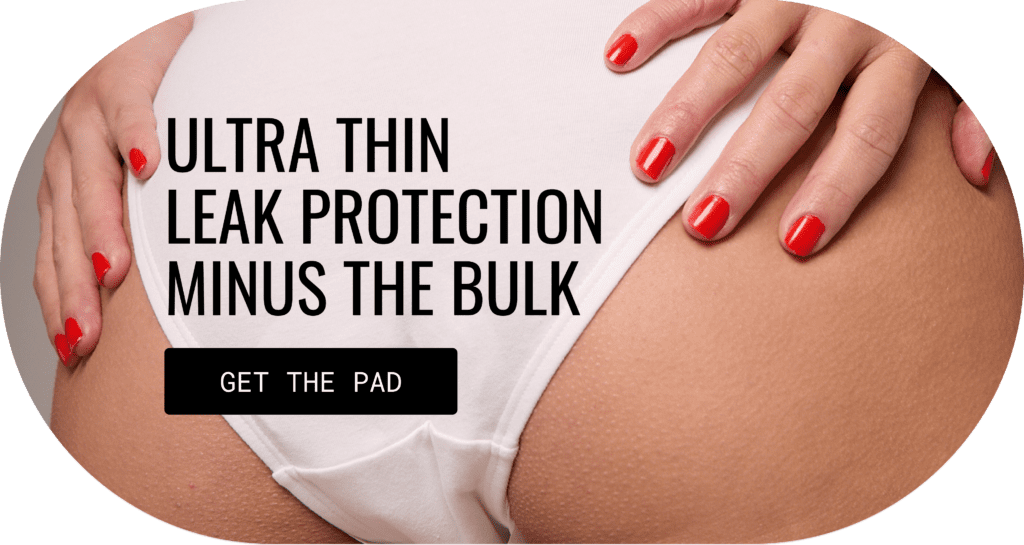
Things to keep in mind when vulva mapping
As you explore your the anatomy of your vulva, vagina, and labia, keep these questions in mind:
- Am I relaxed?
- What emotions (if any) does this bring up?
- Which vulvar regions or specific part of your vulva feel sensitive to touch? Any discomfort?
- Which points feel less sensitive?
- How do I feel about what I see?
Remember that you don’t need to have a complete answer right away: It might take some time, or multiple sessions, to understand the emotions or feelings that get brought up throughout your entire journey. After all, most of us haven’t spent time getting this intimate with our most intimate body parts.
You might laugh a little, feel awkward, or even feel nervous or overwhelmed. Know that any of the above is normal and okay! You have permission to take a break anytime you want.
What changes occur in the vulva during puberty, pregnancy, and menopause?
During puberty, the vulva develops and becomes more pronounced. During pregnancy, increased blood flow and hormonal changes can cause swelling and discoloration of the vulvar tissue. During menopause, decreased estrogen levels can cause thinning tissues and decreased lubrication that can lead to vaginal dryness after the reproductive years.
The myth of the perfect vulva anatomy: All vulvas are beautiful
In a society that perpetuates the idea that it’s taboo even to say the name of our genitals out loud, vulva mapping subverts this conditioning. Practicing self-exploration is one of the best things to increase self-esteem,promote empowerment and boost pleasure while resisting the idea that there is such thing as a “perfect” vulva or vagina—because “perfect” does not exist.
It should go without saying, but all vulvas are beautiful exactly as they are.
Remember, each vulva is unique, just like fingerprints. Embracing this uniqueness is essential for fostering a positive body image and loving oneself fully. Engaging with your vulva anatomy can be empowering. It encourages you to celebrate the variations and appreciate your body as it changes over time. Remember, this journey of self-discovery is deeply personal, and it’s perfectly fine to take it at your own pace. Whether you’re exploring physical sensations or grappling with emotional responses, approach it all with kindness and curiosity.
This article is informational only and is not offered as medical advice, nor does it substitute for a consultation with your physician or healthcare provider. If you have any gynecological/medical concerns or conditions, please consult your physician.
© 2025 The Flex Company. All Rights Reserved.
- Kalampalikis, A., Michala, L. Cosmetic labiaplasty on minors: a review of current trends and evidence. Int J Impot Res (2021). https://doi.org/10.1038/s41443-021-00480-1[↩]
- Laan, E., Martoredjo, D. K., Hesselink, S., Snijders, N., & Van Lunsen, R. H. (2016, September 20). Young women’s genital self-image and effects of exposure to pictures of natural vulvas. Taylor & Francis. https://www.tandfonline.com/doi/full/10.1080/0167482X.2016.1233172[↩]
- Natalie Gil, Anna Jay, Meg O’Donnell. (2019, March 22). We asked 3,670 women about their vaginas – Here’s what they told us. Refinery29. https://www.refinery29.com/en-us/2019/03/226659/vagina-attitudes-survey[↩]
- Pappas, S. (2013, October 4). Size doesn’t matter: ‘Penis shame’ is all in guys’ heads. Live Science. https://www.livescience.com/40192-penis-shame-guys-heads.html[↩]
- Schick, V. R., Calabrese, S. K., Rima, B. N., & Zucker, A. N. (2010). Genital Appearance Dissatisfaction: Implications for Women’s Genital Image Self-Consciousness, Sexual Esteem, Sexual Satisfaction, and Sexual Risk. Psychology of women quarterly, 34(3), 394–404. https://doi.org/10.1111/j.1471-6402.2010.01584.x[↩]
- Benabe, E., Fuentes, Y., Roldan, G., Ramos, M., Pastrana, M., & Josefina Romaguera, J. (2021, July 16). The perceptions of female genital self-image and its associations with female sexual distress. Obstetrics and Gynecology. https://obgyn.onlinelibrary.wiley.com/doi/abs/10.1002/ijgo.13827[↩]
